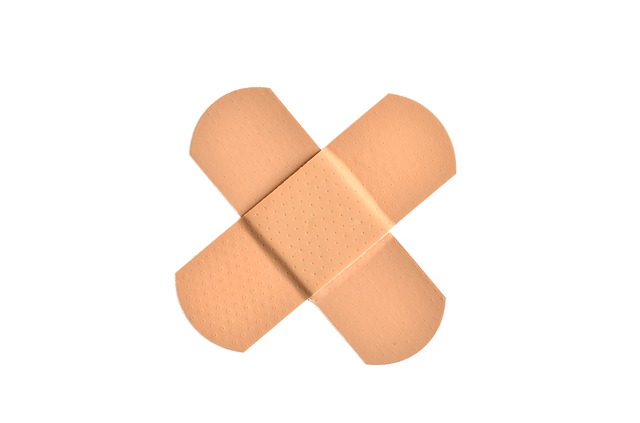An Over-The-Counter Solution For Self-Injurious Behavior?
Erik Messamore, MD, PhD
N-acetylcysteine shows promise in the treatment of recurrent self-injury, according to initial clinical reports

An over-the-counter pharmaceutical
Clinical reports suggest that recurrent self-injurious behaviors like self-cutting might be reduced, or in some cases eliminated, with something that can be obtained as an over-the-counter supplement in the US. The substance is called N-acetylcysteine.
I describe N-acetylcysteine (NAC) as a ‘semi-natural’ product. It’s composed of an ordinary amino acid (cysteine) linked to an acetyl group (acetyl groups are widely produced and circulated throughout the body; they participate in many biochemical pathways).
When used at pharmacological doses, NAC does two very interesting things. It boosts the production of one of the body’s antioxidant defense molecules (glutathione). And it affects the activity of the brain’s most widely-used neurotransmitters, glutamate.
The ability of NAC to affect glutamate signals in the brain makes N-acetylcysteine a bona fide psychotropic agent. Research studies have shown that N-acetylcysteine may reduce compulsive hair-pulling, skin-picking, pathological gambling, or drug craving. Here, we will look at emerging evidence that NAC can reduce or eliminate habitual self-injurious behavior.
The problem of self-injurious behavior
About 4% of the population engages in recurrent self-injury. Cutting is the most common form of self-injurious behavior. Once established, it can become habitual, even compulsive. Psychotherapies focused on distress tolerance and emotion regulation are (by far!) the most effective treatment for most instances of recurrent self-injurious behavior.
Medication treatments have had only sporadic or limited success in clinical practice. Considering the lackluster ability of medications to reduce recurrent self-injurious behavior, the following reports are really noteworthy.
Clinical reports
Pittenger and colleagues describe sustained (6-month) remission of self-injurious behaviors in a 25 year old woman with posttraumatic stress disorder, borderline personality disorder, and recurrent self-cutting after N-acetylcysteine was added to her treatment.
“Within 2 weeks of starting treatment with NAC, her desire to cut again decreased. Ms. A’s self-report was that treatment with NAC significantly attenuated the self-injurious cravings… she has continued not to engage in any self-injurious behaviors for more than 6 months while being treated with either riluzole or NAC.”
C.P. Rus describes 16 weeks devoid of self-laceration in a 17 yo adolescent with complex trauma history (including being bullied and being sexually abused) and daily deep self-self-cutting of arms or legs. The paper is written in Dutch. The following are English-translated excerpts
“Barely two days after the start of NAC, the treating psychiatrist reported a massive change in a couple of neurophysiological and behavioural parameters in the patient. The heart rate frequency had lowered to 60 beats per minute, and the patient felt less depressed. Mother said her daughter was less irritable. Patient said she could concentrate better and was less impulsive in regard to binging on food and buying things.”
“These effects were in accordance with the experiences I had with NAC treatments… In the next 16 weeks, these changes persisted, and the propranolol and oxazepam could be phased out… After starting with NAC, self-cutting only occurred twice in the first four weeks. Since the use of NAC, the patient was less sensitive to crisis situations and she required less attention. Patient experienced a side effect, a slight asthmatic reaction (she was sensitive to it). She took salbutamol when necessary.”
Most recently, N-acetylcysteine treatment was associated with significantly lower frequency of self-injurious behaviors among a group of female adolescents and young adults with recurrent non-suicidal self-injury. Study results showed that depression scores went down as well. And that having more severe self-injurious behaviors before starting treatment was a significant predictor of treatment response. In other words, the NAC treatment appeared to be more effective for the individuals with more frequent self-injury.
Safety
As may expected from an over-the-counter product, NAC appears to be relatively safe.
Side effects may include: nausea, vomiting, diarrhea, or constipation. Some people are allergic to NAC. There are concerns that it may provoke breathing problems in people with asthma. Additional side effects and cautions are described here.
Conclusion
It’s difficult to make strong predictions based on case reports and small studies. (So far, these are all the data we have about N-acetylcysteine for self-injurious behavior). But these initial reports are impressive. It’s rare that someone with well-established repetitive self-cutting will suddenly convert to sustained remission of the behavior. So, I am cautiously optimistic that future studies will support these early findings. If so, these discoveries will transform our understanding of this behavior and will help to improve the quality of many lives.
Disclaimers
This article summarizes the results and conclusions of articles published in the medical literature. It is for general information. It is not a substitute for medical advice, and readers are admonished not to enact or change treatments based on this article. Always seek the advice of your doctor before starting or changing treatment.
The thoughts, views, and opinions expressed in this article are my own and do not reflect or represent the policy or position of Northeast Ohio Medical University